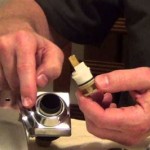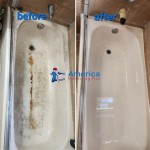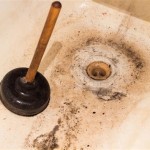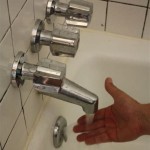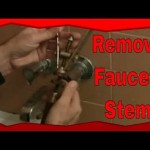How to Attach a Garden Hose to a Bathtub Faucet Adapter
Connecting a garden hose to a bathtub faucet can be a practical solution for various tasks, such as filling large containers, washing pets indoors, or providing water to plants during colder months when outdoor spigots might be frozen or inaccessible. However, direct connection is rarely possible due to the difference in threading between garden hoses and bathtub faucets. This necessitates the use of an adapter, a simple yet essential component that bridges this gap. This article provides a comprehensive guide on how to attach a garden hose to a bathtub faucet using the appropriate adapter, ensuring a secure and leak-free connection.
The process involves several steps, from identifying the correct type of adapter for the specific faucet and hose to properly installing and testing the connection. It is crucial to select the right adapter and employ the correct techniques to prevent damage to either the faucet or the hose and to ensure a consistent water flow without leaks. Safety is paramount; therefore, one should be cautious when dealing with water pressure and potential slippage.
Identifying the Correct Adapter
The first crucial step in connecting a garden hose to a bathtub faucet is identifying the correct type of adapter. Bathtub faucets come in various designs and sizes, and garden hoses have a standard threading. Therefore, finding an adapter that matches both the faucet and the hose is vital for a successful connection. This process typically involves examining the faucet spout and determining its threading type, whether it’s internal or external, and measuring its diameter.
There are several common types of adapters available, each designed to fit specific faucet configurations. One prevalent type is the threaded faucet adapter, which screws onto faucets with external threads. These adapters typically come with rubber washers or O-rings to create a watertight seal. Another common type is the slip-on adapter, which is designed for smooth, non-threaded faucet spouts. These adapters often utilize a clamping mechanism or rubber sleeve to secure themselves to the faucet. Universal faucet adapters are also available; these are designed to fit a wide range of faucet sizes and shapes, usually incorporating adjustable collars or straps to achieve a secure fit. However, universal adapters might not provide as tight a seal as adapters specifically designed for a particular faucet type, so their reliability can vary depending on the specific design and quality of materials.
When selecting an adapter, it's important to consider the materials used in its construction. Brass adapters are known for their durability and resistance to corrosion, making them a long-lasting option. Plastic adapters are typically more affordable but may not be as robust or resistant to wear and tear. Chrome-plated adapters offer a visually appealing finish and a degree of corrosion resistance, but the plating can be susceptible to scratches and peeling over time. Choosing an adapter made from high-quality materials will ensure a more reliable and long-lasting connection.
Before purchasing an adapter, it is advisable to measure the diameter of the faucet spout to ensure a proper fit. Many adapters come with specific size ranges, and selecting the correct size will prevent issues such as leaks or difficulty in securing the adapter. If unsure about the faucet's threading or size, consulting a plumbing supply store or hardware store employee can be helpful. Bringing photographs or even the faucet aerator can help the employee identify the correct type of adapter for the faucet.
Installing the Adapter and Garden Hose
Once the appropriate adapter has been identified and acquired, the next step is to install it onto the bathtub faucet and connect the garden hose. This process must be done carefully to avoid damaging the faucet or the adapter and to create a secure and leak-free connection. The specific steps may vary slightly depending on the type of adapter being used, but the underlying principles remain the same.
First, turn off the water supply to the bathtub faucet. This will prevent water from flowing during the installation process and avoid any potential mess. This can usually be accomplished by shutting off the individual faucet shutoff valves usually located underneath the sink or tub if available. If not, the main water supply to the residence may need to be shut off. Once the water supply is off, open the bathtub faucet to relieve any remaining pressure in the pipes.
Next, prepare the faucet for the adapter. For threaded faucet adapters, remove the aerator from the faucet spout. The aerator is the small screen-covered piece at the end of the faucet that regulates water flow. Using adjustable pliers, carefully unscrew the aerator. Be careful not to damage the faucet's threads during removal. For slip-on adapters, ensure the faucet spout is clean and free of any debris. A clean surface will help the adapter grip the faucet more securely.
Now, attach the adapter to the faucet. For threaded adapters, align the adapter threads with the faucet threads and begin screwing the adapter onto the faucet. Tighten the adapter by hand until it is snug. Avoid over-tightening, as this can damage the threads on either the faucet or the adapter. Use adjustable pliers or a wrench to tighten the adapter further, but be careful not to apply excessive force. A quarter turn beyond hand-tight should be sufficient. For slip-on adapters, slide the adapter onto the faucet spout. Ensure the adapter is securely positioned and that any clamping mechanisms or straps are properly tightened. Follow the manufacturer's instructions for tightening the adapter, as different designs may require different techniques.
With the adapter securely installed, connect the garden hose to the adapter. Most adapters feature a standard garden hose thread (GHT) connection. Thread the garden hose onto the adapter, tightening it by hand until it is snug. Again, avoid over-tightening. Use pliers lightly to tighten the hose if needed, but exercise caution not to damage the hose fitting.
After connecting the hose, carefully turn the water supply back on slowly. Monitor the connections for any leaks. If leaks are observed at the faucet-adapter connection, tighten the adapter slightly. If the leak persists, disassemble the connection and inspect the threads and rubber washers for damage or misalignment. Ensure the rubber washer is properly seated and consider adding Teflon tape (plumber's tape) to the faucet threads for a tighter seal. If leaks are observed at the adapter-hose connection, tighten the hose slightly. If the leak persists, follow the same troubleshooting steps as with the faucet-adapter connection.
Securing and Maintaining the Connection
Once the garden hose is successfully connected to the bathtub faucet without any leaks, it is crucial to secure and maintain the connection to prevent future issues. This involves providing support for the hose, protecting the connection from strain, and regularly inspecting the components for wear and tear.
The weight of a filled garden hose can put significant strain on the faucet and adapter connection, potentially leading to leaks or damage. To mitigate this, provide support for the hose near the faucet. This can be achieved by using a hose hanger or clip to secure the hose to a nearby wall or surface. This will help distribute the weight of the hose and reduce the stress on the connection. Avoid kinking the hose near the faucet, as this can also create undue stress on the connection.
Protect the adapter and hose connection from physical damage. Avoid bumping or knocking the connection, as this can loosen the adapter or damage the threads. If the connection is located in an area where it is likely to be bumped or disturbed, consider covering it with a protective shield or guard. Avoid exposing the adapter and hose to extreme temperatures or direct sunlight for extended periods, as this can cause the materials to degrade over time.
Regularly inspect the adapter, hose, and faucet for signs of wear and tear. Check for cracks, leaks, or corrosion. If any of these issues are observed, replace the affected components immediately. Pay close attention to the rubber washers and O-rings, as these are particularly prone to wear and tear. Replace these components as needed to maintain a watertight seal. Periodically tighten the adapter and hose connections to ensure they remain secure, but avoid over-tightening.
When not in use, disconnect the garden hose from the adapter and store it properly. Drain any water from the hose to prevent freezing in cold weather. Store the hose in a cool, dry place away from direct sunlight. This will help prolong the life of the hose and prevent it from becoming brittle or cracked. Periodically clean the adapter and faucet threads to remove any build-up of mineral deposits or debris. This will help ensure a smooth and secure connection in the future.
By following these steps, one can successfully attach a garden hose to a bathtub faucet using an adapter and ensure a safe, reliable, and long-lasting connection. Regular maintenance and inspection will help prevent issues and prolong the life of the components, saving time and money in the long run.

How To Attach A Garden Hose Kitchen Faucet Easy Diy

How To Attach A Garden Hose Kitchen Faucet Easy Diy

No Shower Problem Install A Diverter In 1 Hour The Art Of Doing Stuff

Oatey 33444 Faucet Adapter To Connect A Garden Hose Kitchen Or Bath Aerator Adapters 038753334448 1

Neatitems Garden Hose Laundry Tub Faucet Adaptor

Klleyna Shower Head Sink Faucet Bathtub Bathroom Garden Hose Sprayer Attachment 5 Adapters For Hair Washing Pet Dog Rinse Baby Bath On Off Extension Faucets

Klleyna Shower Head Sink Faucet Bathtub Bathroom Garden Hose Sprayer Attachment 5 Adapters For Hair Washing Pet Dog Rinse Baby Bath On Off Extension Faucets Heads

Rinseroo Tub Faucet Hose And Sprayer Slips On To Spout For Hair Washing Baby Or Dog Bath Bathtub Showerhead Attachment Shower Adapter Fits All Spouts Up

Dog Bath Faucet Shower Head Accessories Adapter

Learn How To Remove And Install Various Tub Spouts


